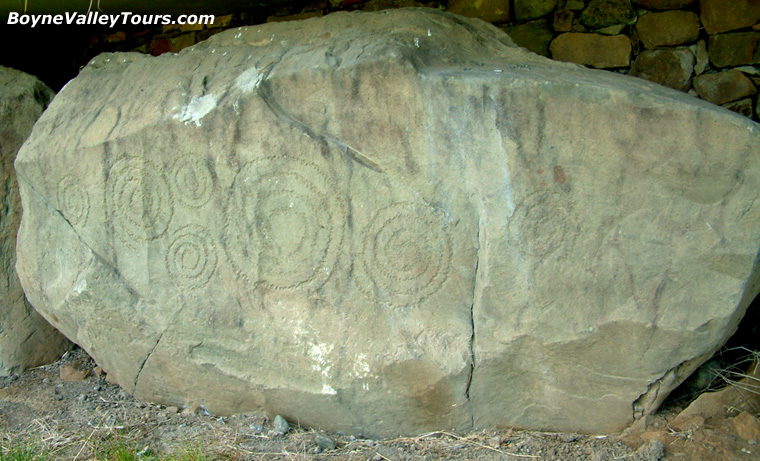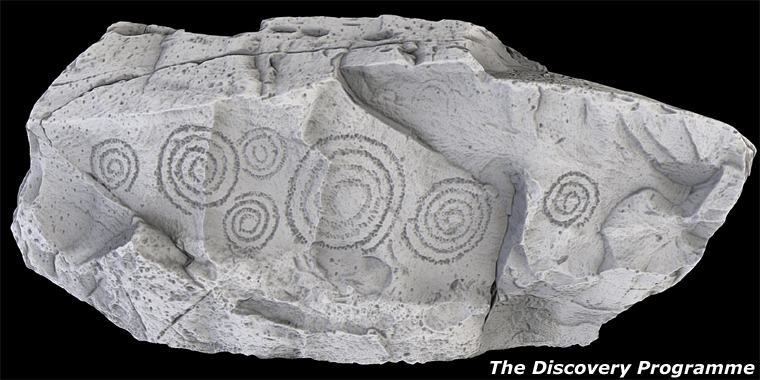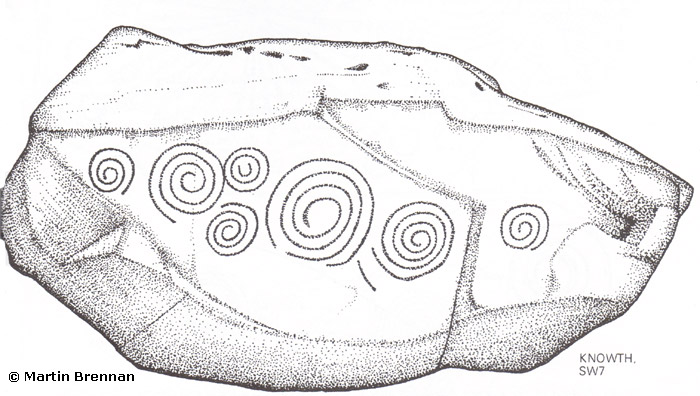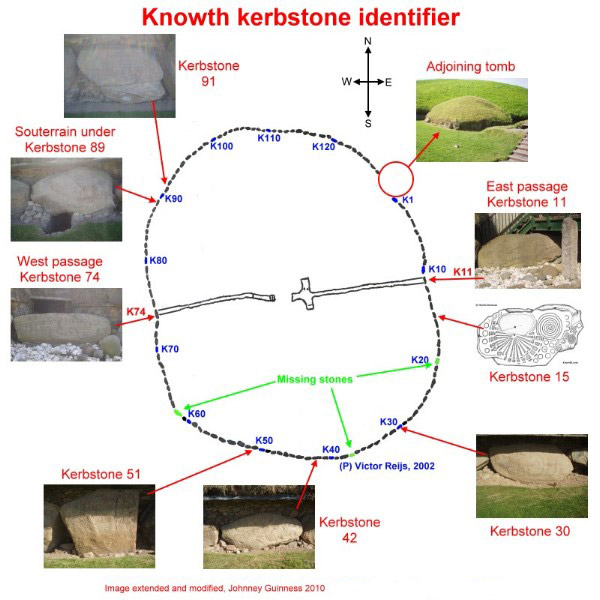The Megalithic Art of the Passage Tombs at Knowth, Co. Meath
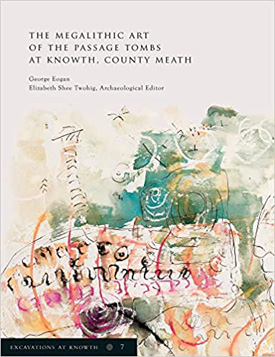 Description of Kerbstone 67
Description of Kerbstone 67The surface of the stone shows a number of cracks and some flaked surfaces. Stage 1 consists of an irregular arrangement of nested, incised triangles near the top-right corner of the stone. This is overlain by one of the spirals of Stage 2. These are all picked, using a tool with a medium-to-fine, rounded point. Chisels were also used, some having a narrow cutting edge and others with a broader edge.
From left to right, the picked motifs comprise a clockwise spiral, an anti-clock-wise spiral of four turns, and a set of three, concentric circles touching this on the right. Below there is an anti-clockwise spiral of three-and-a-half turns, then the biggest, centrally placed clockwise spiral of four turns, with another smaller one of four turns to the right and another of three turns further right. Lower down to the right is a small U, opening upwards, and near the top of the stone is a double U-motif opening downwards. Near the left side of the stone there are some dispersed pickmarks.
Purchase at Amazon.com or Amazon.co.uk. View or Download at Digital Repository of Ireland.
Knowth is a Stone Age Passage Tomb in the Boyne Valley in Ireland's Ancient East and together with Newgrange and Dowth are the principal sites of Brú na Bóinne UNESCO World Heritage Site. Knowth is the largest passage tomb of the Brú na Bóinne complex. The main mound is about 12 metres (40 ft) high and 67 metres (220 ft) in diameter covering about 1 hectare (2.5 acres). It contains two passages placed along an east-west line and was originally encircled by 127 kerbstones of which 124 are still in place.
Boyne Valley Private Day Tour
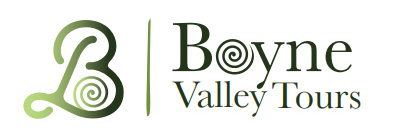 Immerse yourself in the rich heritage and culture of the Boyne Valley with our full-day private tours.
Visit Newgrange World Heritage site, explore the Hill of Slane, where Saint Patrick famously lit the Paschal fire.
Discover the Hill of Tara, the ancient seat of power for the High Kings of Ireland.
Book Now
Immerse yourself in the rich heritage and culture of the Boyne Valley with our full-day private tours.
Visit Newgrange World Heritage site, explore the Hill of Slane, where Saint Patrick famously lit the Paschal fire.
Discover the Hill of Tara, the ancient seat of power for the High Kings of Ireland.
Book Now
Home
| Newgrange
| Knowth
| Dowth
| Hill of Tara
| Fourknocks
| Loughcrew
| More Places
| Labyrinths
| Local Info
| Art Works
| Articles
| Images
| Books
| Links
| Boyne Valley Tours
| Contact

